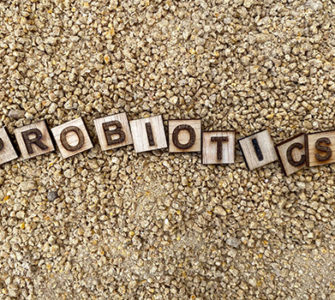Coccidiosis control: Keys to success with a bioshuttle program
Resistance is unlikely to be a problem in coccidiosis bioshuttle programs, Greg Mathis, PhD, Southern Poultry Research, told Poultry Health Today.
Bioshuttle programs start with hatchery vaccination against coccidiosis followed by use of an in-feed anticoccidial. Alternative products are also often used, Mathis said.
The key to success with bioshuttle programs in no-antibiotics-ever (NAE) production, he said, is allowing immunity to develop after vaccination. Toward that end, Mathis recommended one and a half or two coccidia cycles after vaccination — the coccidial lifecycle being 7 days — before using an in-feed anticoccidial.
He cautioned that when an anticoccidial is administered after vaccination, it must not be done too soon because it could kill off vaccinal coccidial oocysts before some immunity has developed. The appropriate time to administer an in-feed anticoccidial is about 14 to 16 days after vaccination, he said.
Sensitive oocysts
Although coccidial resistance remains a major concern, it’s unlikely to develop in a bioshuttle program because every time the vaccine is used, coccidia that are still sensitive to in-feed anticoccidials are reintroduced to the poultry house, Mathis said.
Ionophores can’t be used in NAE production systems because they are considered antibiotics by the Food and Drug Administration, but in conventional production, they are viewed as a valuable tool.
The return of zoalene
Mathis pointed out there are only seven non-ionophore anticoccidials available in the US and all have been around for decades.
One of them is zoalene, which returned to the U.S. poultry market in 2014 following a 9-year hiatus stemming from an ingredient shortage.
The product’s return has been helpful to the industry, particularly to NAE production systems that often use it in a bioshuttle program with vaccines, Mathis said. Because there is some coccidial leakage with zoalene, it allows some immunity to develop.
Alternative products in the rotation
Antibiotic alternatives are being used more frequently as part of a bioshuttle program, but they are not used as stand-alone products; they tend to be used continuously through production to help prevent coccidiosis and necrotic enteritis, he said.
Producers understand how probiotics work and therefore use them widely in coccidiosis-control programs. Other alternatives used include saponins such as triterpenoids and yucca extracts, as well as essential oils, which have antibacterial and antiprotozoal activity, Mathis said.
Among the feed acidifiers, butyric acid improves villi growth and strength and has generated a lot of interest among producers. Any feed acidification will reduce Clostridium and Salmonella as well, he added.
Posted on October 20, 2019

















